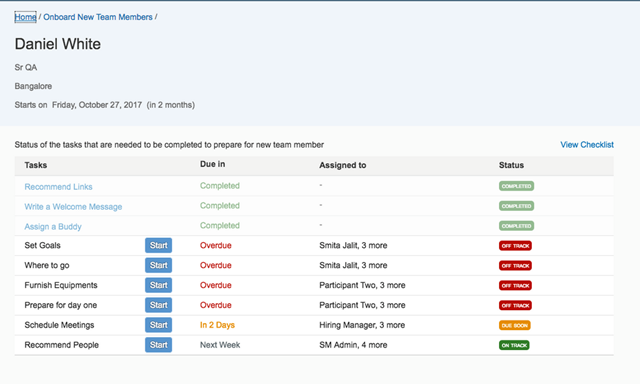So what about the workplace? Businesses have the ability to use technology to prepare us – the employees – for a wealth of scenarios that we’ve barely begun to scratch the surface of. But there is a particular scenario where we often don’t have access to all the information we desire: when we are successful in a job application. The information we receive during the recruitment process is entirely controlled by the organisation. We cannot personally discover the typical onboarding process for this organisation, and hence we are likely to be more anxious about being underprepared for our daunting first day at our new job.
The job application process is the easy part – companies can tailor the information they want to share about their organisation via digital channels such as their website, recruitment websites and social media. There are sites such as Glassdoor and Indeed which allows former employees of companies to write reviews about their personal work experiences. But in regards to the specific information you need about the new role, environment, culture and team that you are about to be a part of – that is a harder nut to crack.
So a new hire has been nicely guided through a recruitment process. What next? Walking into reception on day one? This is no longer good enough, let alone for the tech-savvy millennial generation who will comprise over a third of the global workforce by 2020 according to research from ManpowerGroup.



/Building-a-better-risk-management-strategy-720x360-(1).webp?mode=autocrop&w=320&h=240&attachmenthistoryguid=40eeeff5-2006-4a09-8310-e2ac9e0c4f4c&v=&focusX=488&focusY=126&c=b5251f7f62e5da06bf6aee092dbe7b2d1686922d296bb0ce3986fa9d383ce047)